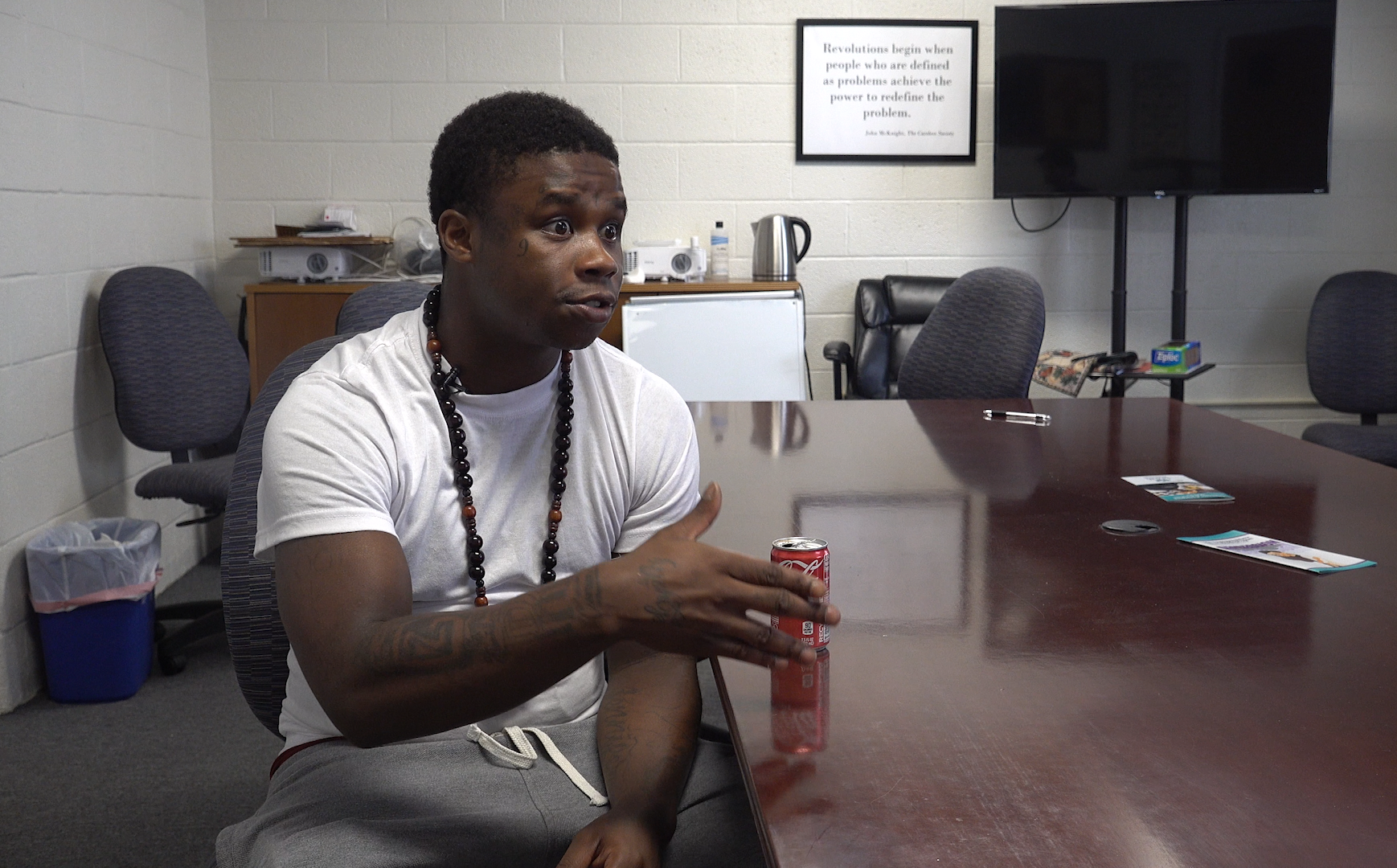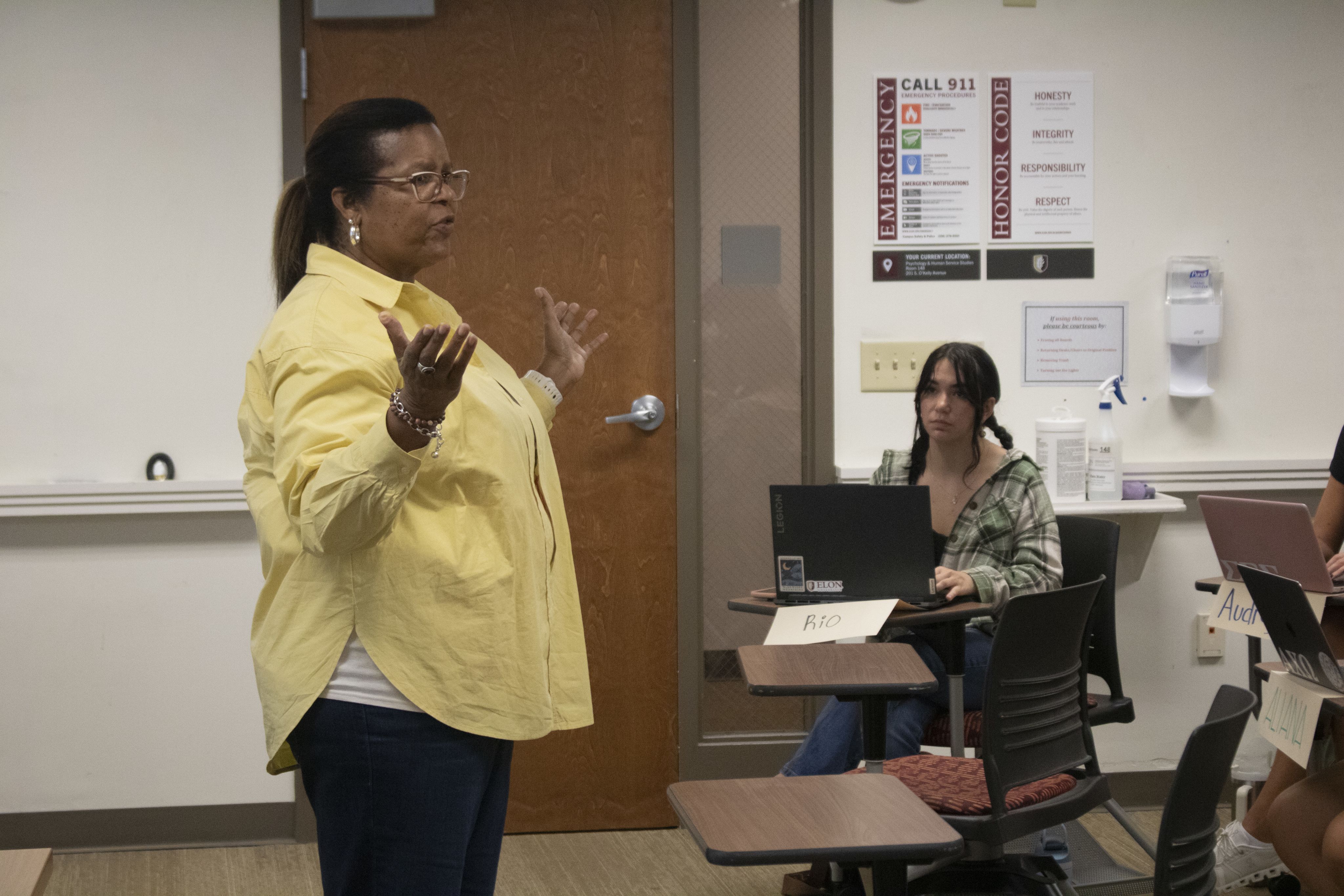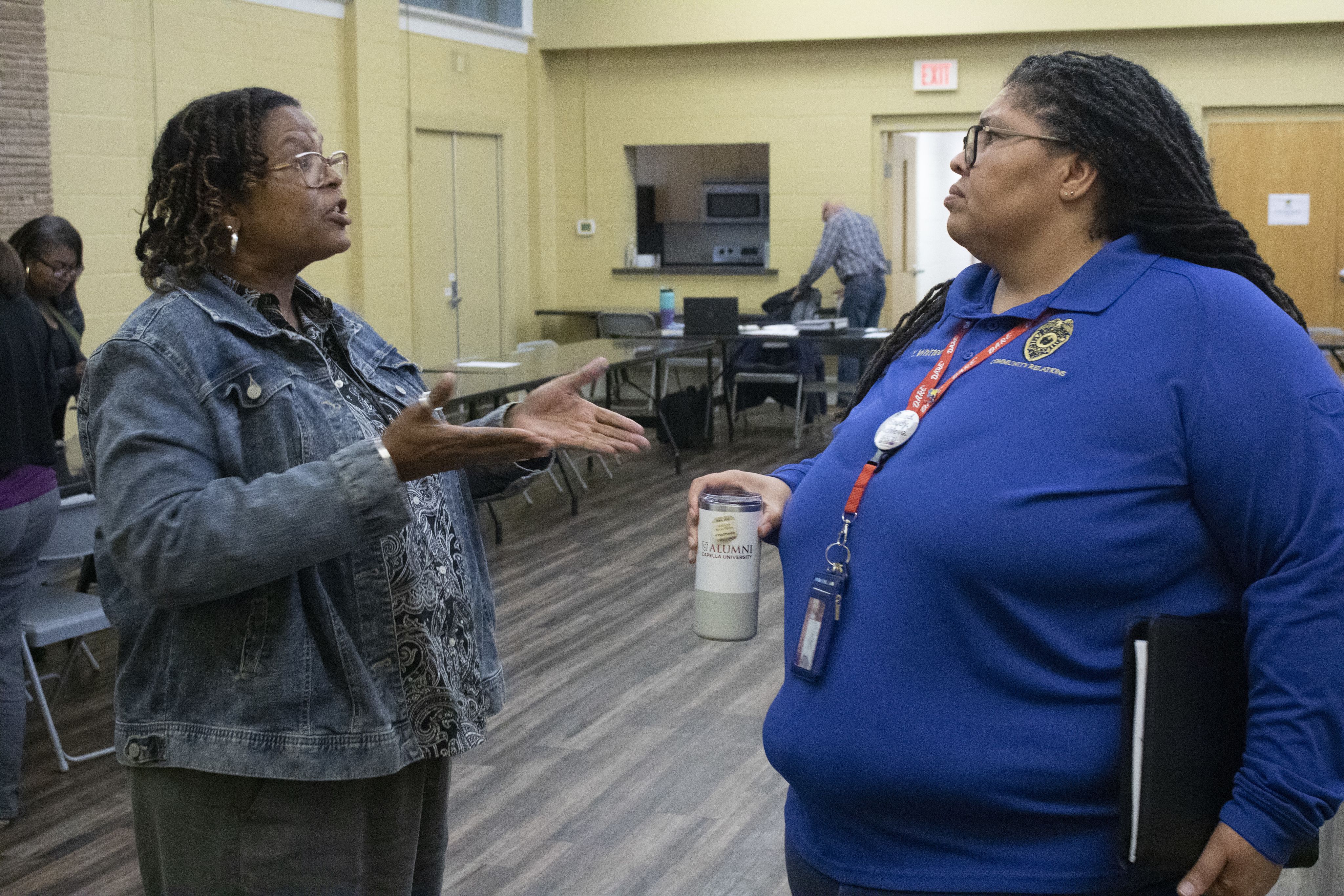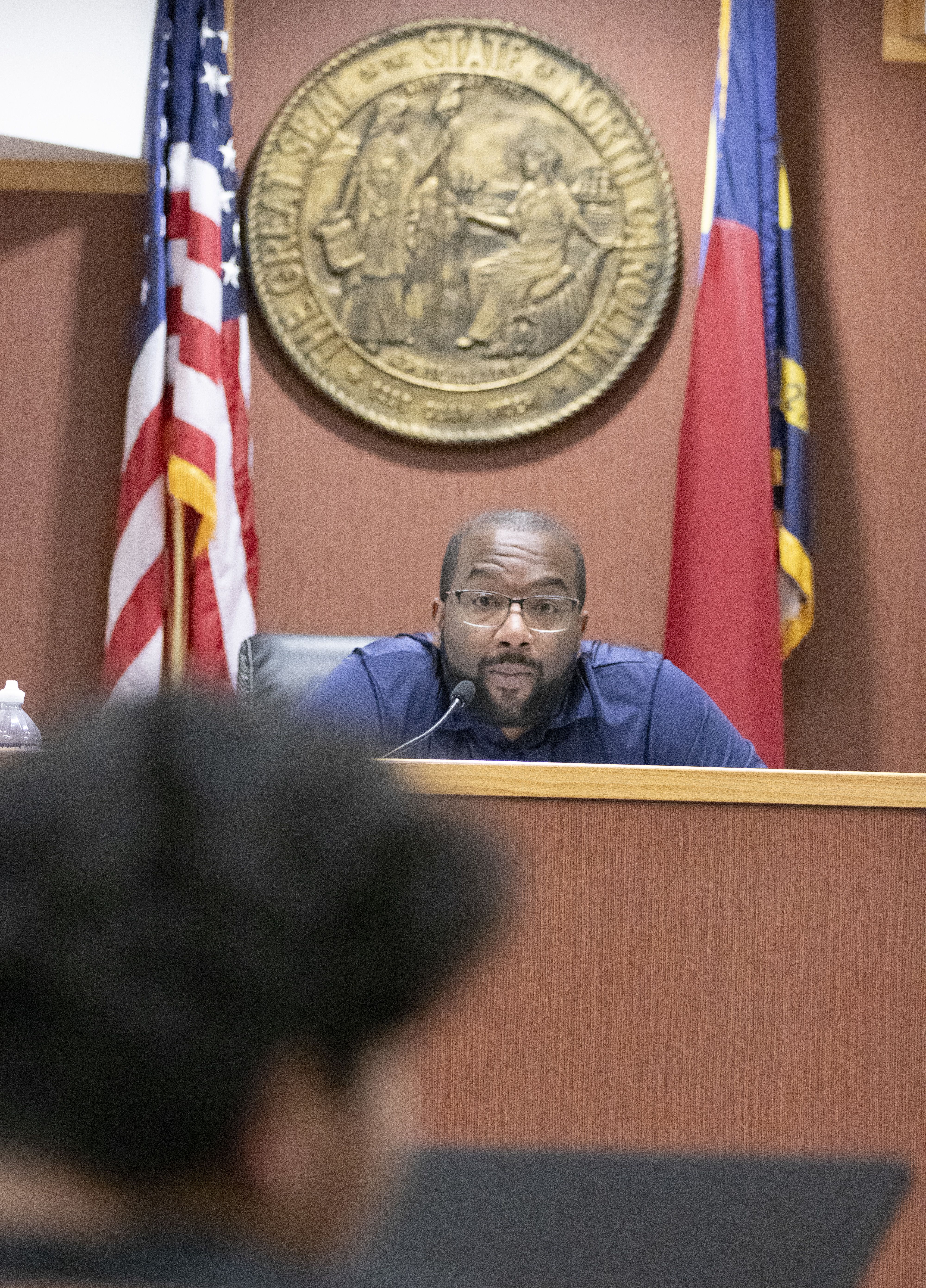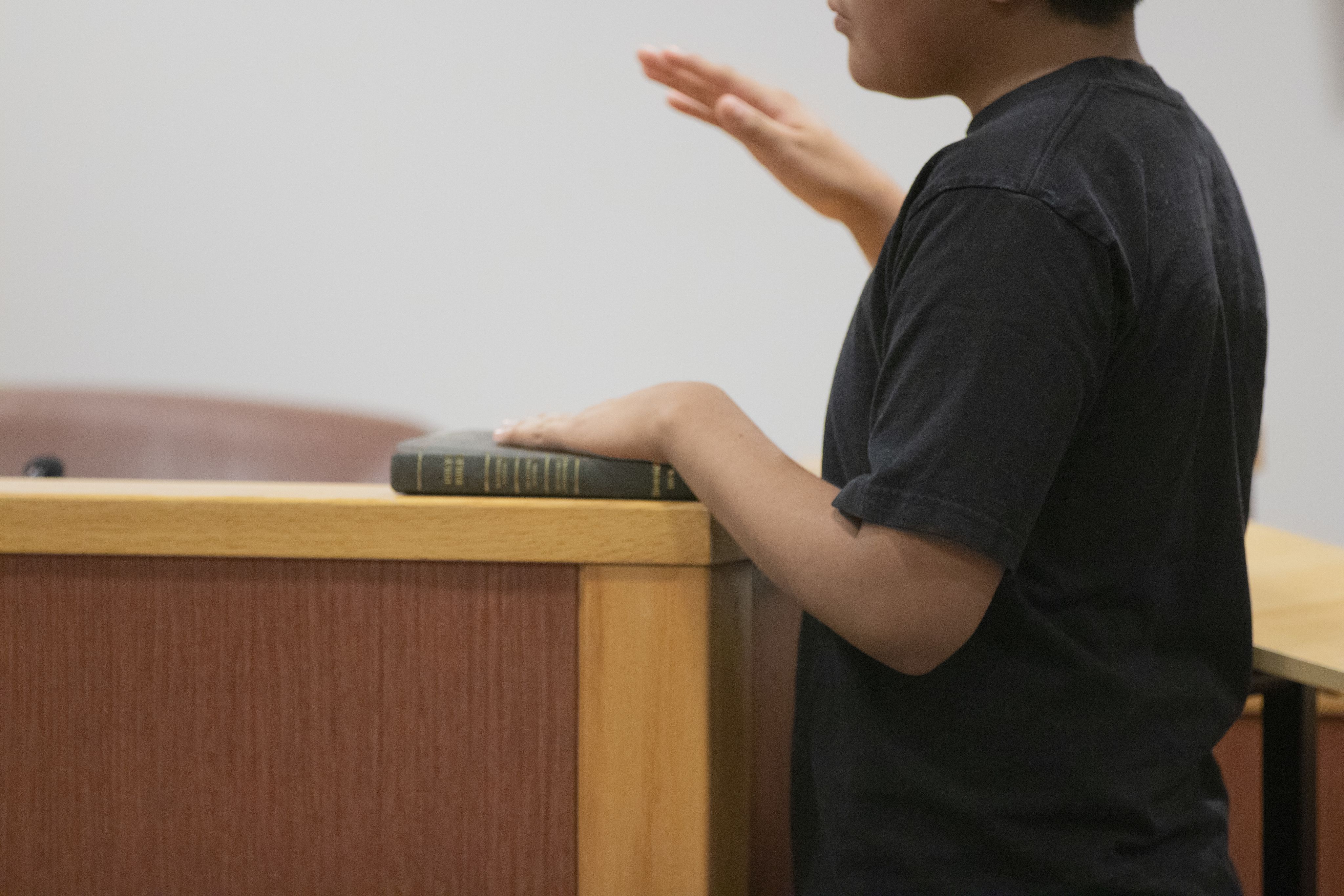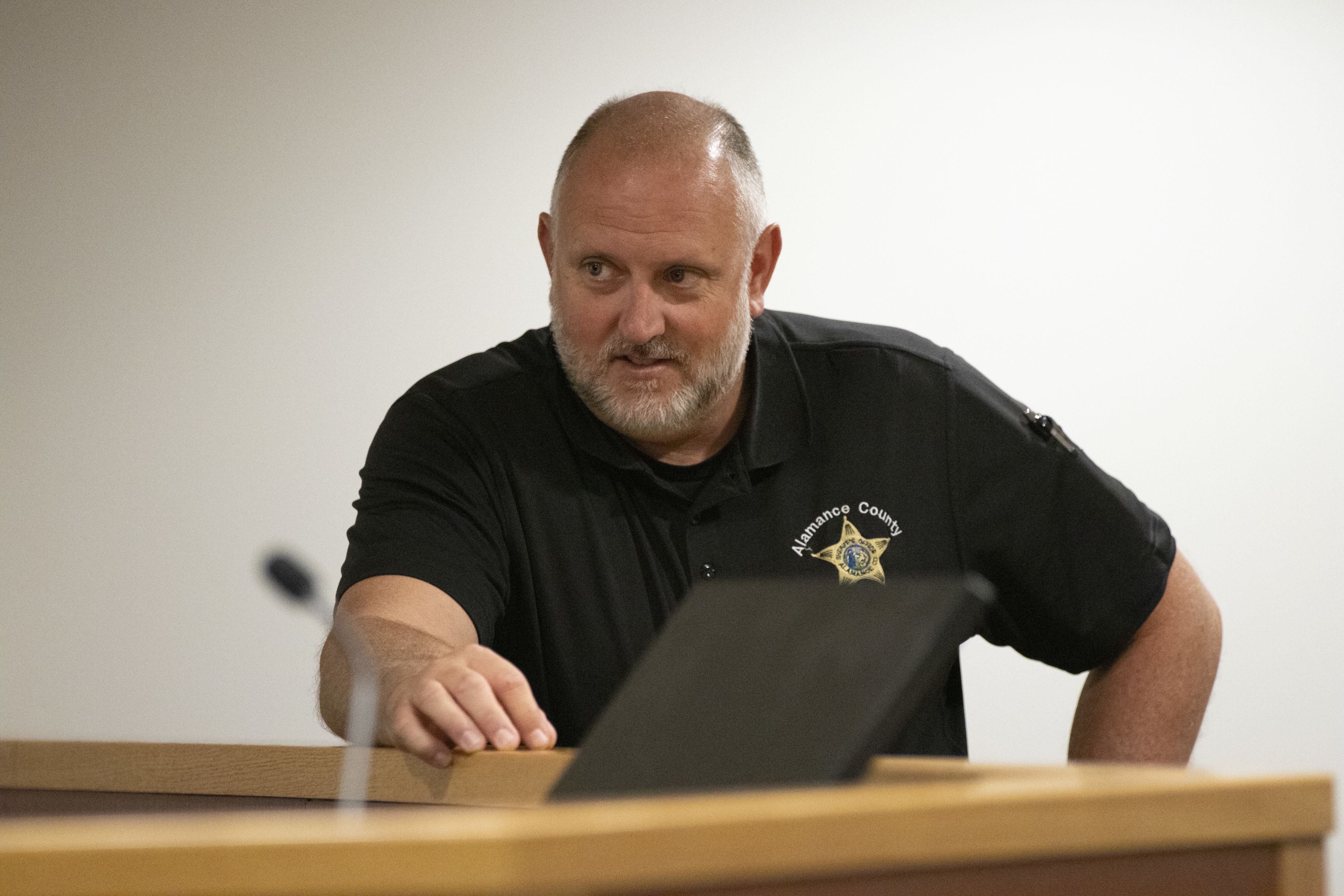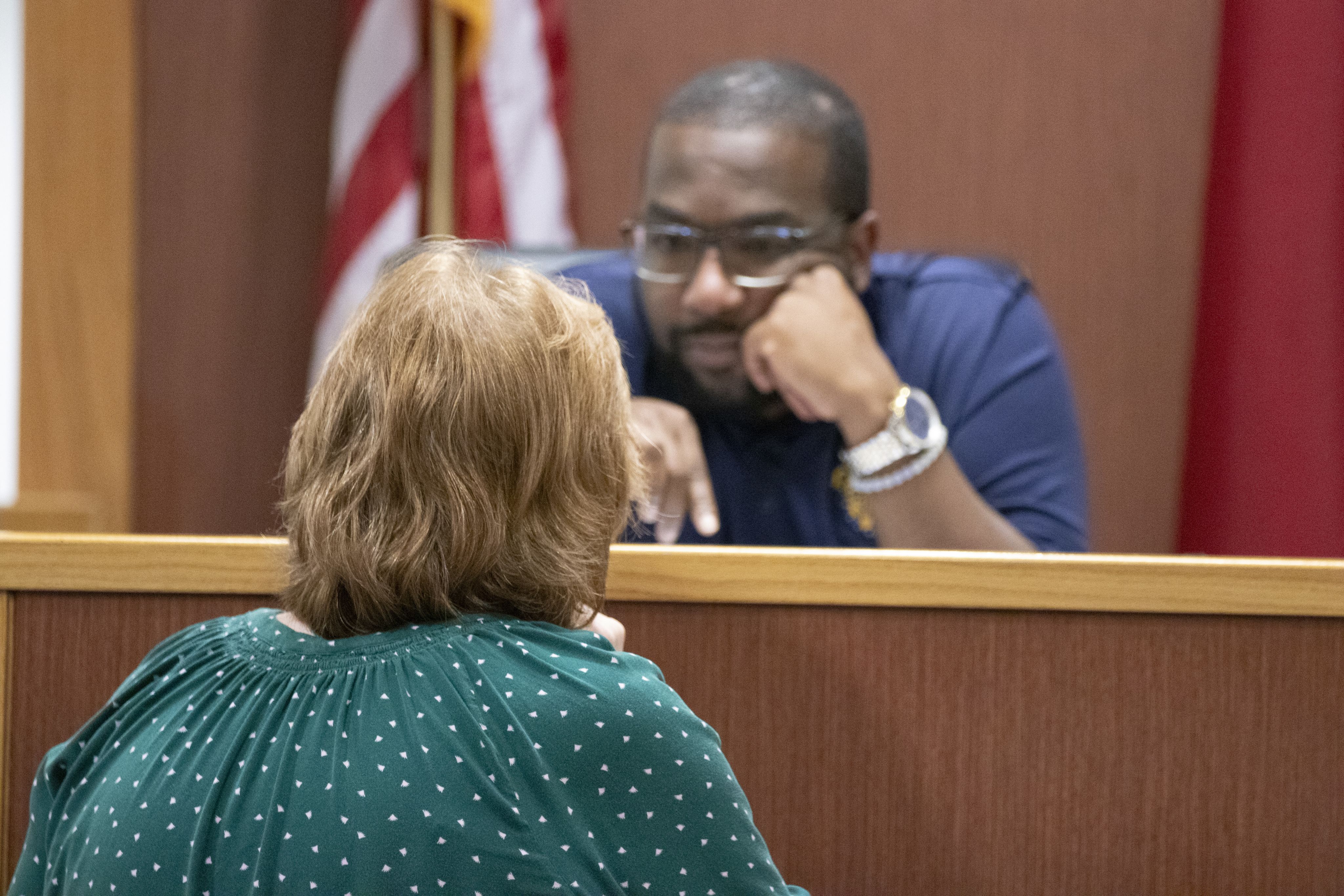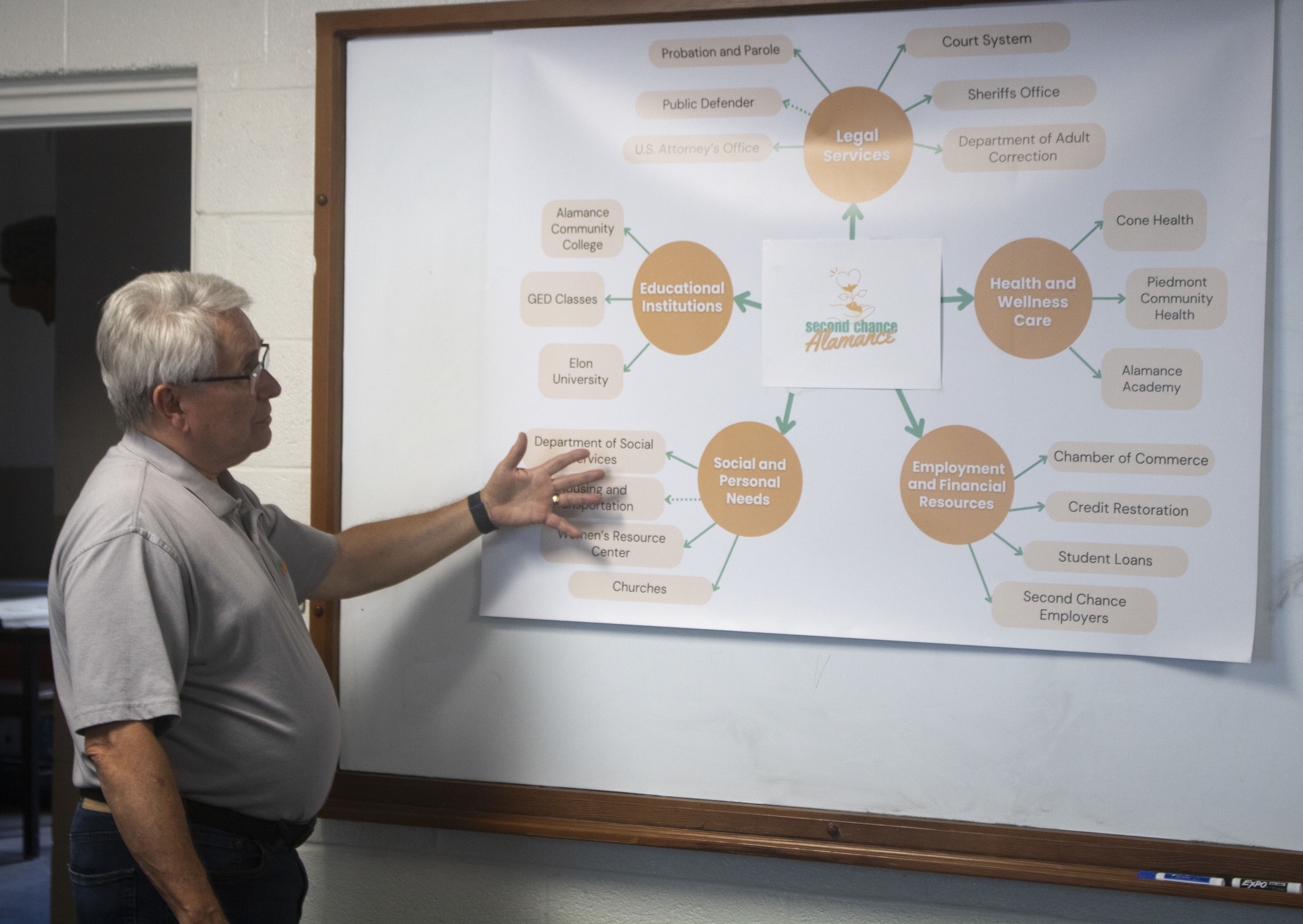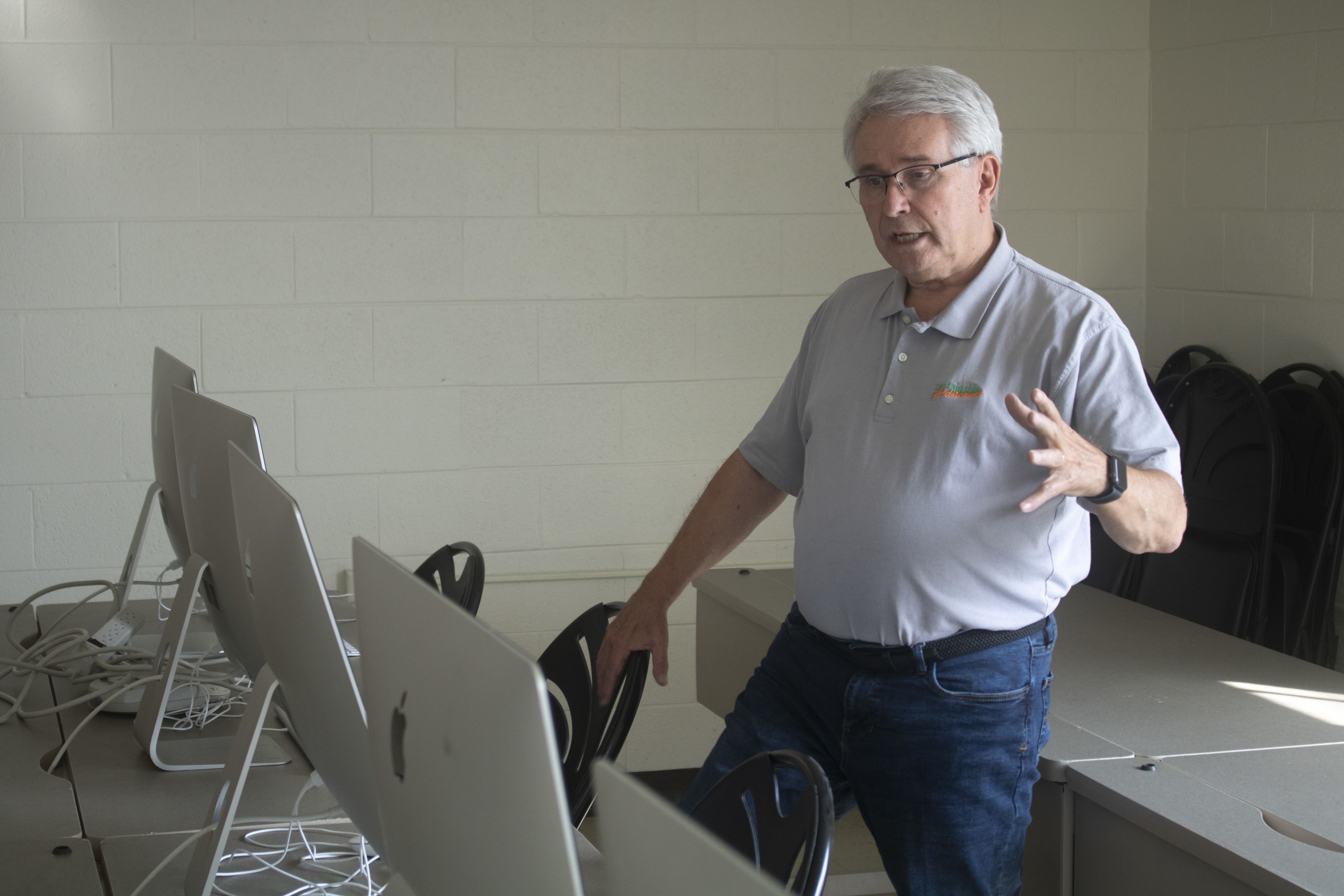Detaining Futures
Alamance, Guilford county juvenile detention rates reach highest in more than a decade; community members emphasize more diversion, rehabilitation resources
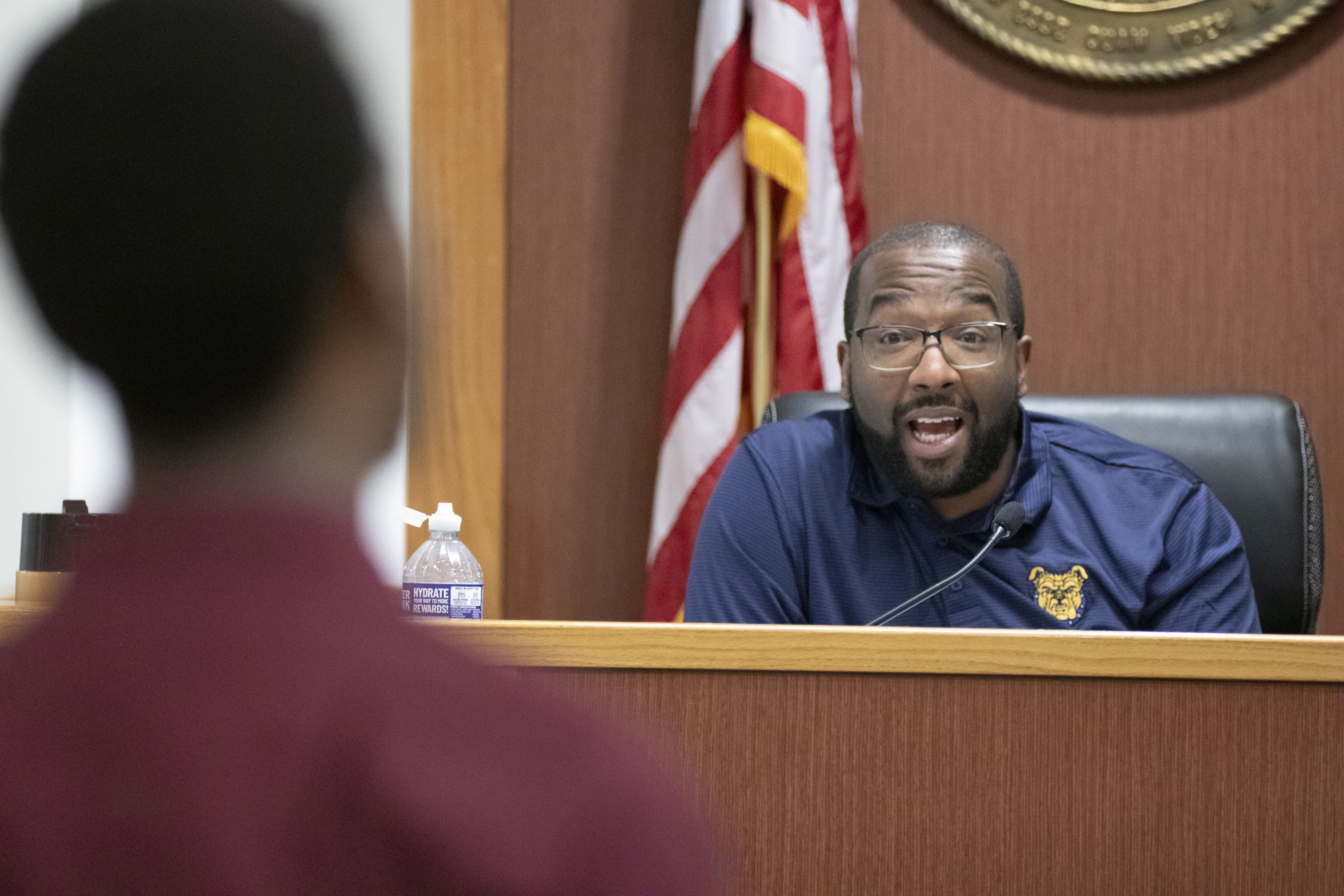
Steven Isaiah Bradshaw was 11 years old the first time he went to Guilford Detention Center. After serving six months for a robbery charge, he was detained for another eight months at 13 years old for similar charges.
“Shoes, clothes, a car, a house, to live, to survive, to eat some food — everything costs money,” Bradshaw said. “So without no money, what you going to do? Can’t depend on the hand to keep giving you things. Eventually, you got to go get it on your own.”
Bradshaw was born and raised in Burlington, North Carolina. After losing his dad at the age of 10, Bradshaw said his mom tried to support him and his three siblings for the next four years, until she was placed in an assisted living home.
Having entered the justice system at a young age, Bradshaw said he felt like he wasn’t given the resources or support to pull himself up.
“You come back to the same thing,” Bradshaw said. “You come back, momma still struggling, you still need money. You just had to go away for a little bit.”
He went on to serve two more sentences of 18 months at 16 years old and 12 months at 18 years old for felony gun charges.
Steven Isaiah Bradshaw, 22 years old, describes his first time going to juvenile detention at 11 years old for robbery charges.
Steven Isaiah Bradshaw, 22 years old, describes his first time going to juvenile detention at 11 years old for robbery charges.
Identifying the problem
Bradshaw is one of many. In the United States, the recidivism rate — or the likelihood of criminal offenders re-offending — reached 80% in 2023 for prisoners with juvenile records, according to data from the Bureau of Justice Statistics.
Matthew Cappello, Alamance County’s lead juvenile court counselor, said recidivism is one of the state’s biggest concerns within the juvenile and criminal justice systems. To combat this, Cappello said North Carolina has made it a priority to invest in diversion and restoration resources rather than punishment and deterrence techniques such as detainment.
Within the juvenile justice system, diversion methods aim to steer incoming juveniles toward resources other than incarceration or detainment.
“We have a confidentiality component, so the kids coming to us — the kids that are receiving charges like this — it’s not something that's on their record permanently,” Cappello said. “The point of that is to protect that kid and get them set up for being an adult without these incidents happening when they're young impacting them for the rest of their lives.”
By diverting offenders to restorative tools, mental health resources and community programs, Cappello said the state’s Department of Juvenile Justice attempts to catch, pinpoint and address the root causes of a child’s criminal behavior when they first come into contact with the justice system.
“We know by research that the further a kid gets into our system, the more likely they are to recidivate,” Cappello said. “That's a core principle.”
In 2021, Senate Bill 207 raised the minimum age that a minor can be charged in juvenile court from 6 to 10 years old. Prior to SB207, North Carolina also had the youngest minimum age law in the country.
In 2019, the Juvenile Justice Reinvestment Act raised the cut-off age that a juvenile could be charged as an adult from 16 to 18 years old.
Despite what seem like legal victories in the fight against juvenile recidivism, both Alamance and Guilford counties have experienced an increase in juvenile detention rates over the past three years.
Guilford County hit a record-low detention rate in 2018 of just over two juveniles for every 1,000 in the county. Since then, the county has seen a steady increase, even through the COVID-19 pandemic, and stands at well over 4 and a half juveniles out of 1,000 as of 2023 — its highest since 2012.
Similarly, Alamance County hit an all-time low in 2020 at a rate per capita of roughly one and a half juveniles, which had been consistent with the prior few years. But in 2022, the rate reached nearly three juveniles — it’s highest since 2011.
Out of North Carolina’s 100 counties, Guilford and Alamance had the fifth and the 24th highest juvenile detention rates respectively per population in 2023.
Cappello said he thinks there are a variety of factors that could have contributed to the increase in detention rates.
While Cappello said keeping juveniles out of the adult system is crucial in avoiding recidivism, the change to state legislature in 2019 introduced more 16- and 17-year-olds to the juvenile system — which could explain the rise in detention rates.
Cappello also said that in addition to more juveniles coming in, 16- and 17-year-olds are more likely on average to commit more serious crimes, and are more likely to result in detainment — as opposed to younger juveniles. When considering whether or not to recommend secure custody, Cappello said the Department of Juvenile Justice will evaluate if other appropriate resources exist — though ultimately a judge must approve detainment.
“In my personal experience, the kids that have gone to detention are usually because the severity of the offense that they committed,” Cappello said. “Or it's a youth that we've tried a ton of other things and just been unsuccessful with.”
Other possible factors that could contribute to the increase in juvenile detentions rates, according to Cappello, may be relative to easier access to firearms and a growing influence of social media on children’s brains — brains that are more likely to struggle with impulse control.
He specifically pointed to a TikTok video that gained traction a couple years ago for teaching teenagers how to break into cars.
YoLanda Whitted, youth intervention and diversion coordinator for the Burlington Police Department, said she agreed that these could be possible factors but also pointed toward a lack of school and community support.
Whitted is one of the first points of contact for juvenile offenders when they interact with the justice system. She said she sees a lot of youth get into trouble because they don’t have structured commitments or positive influences in the community to keep them busy and productive.
She also said this disproportionately affects children of low socioeconomic status, as juveniles whose families can afford to send them to karate, tennis lessons, ballet, gymnastics or more structured activities.
“One of the first challenges that I came to notice in this particular area is that if you are older than 12, there's probably not that much that you can do,” Whitted said. “When you're from a lower socioeconomic status, you need things that are free. Or some type of atmosphere like a community center that you can go to and feel safe and be supervised.”
Bradshaw said this was the one aspect that the juvenile justice system desperately lacks.
“The best way, just show them you care about them,” Bradshaw said. “At an early age with your back against the wall, you don't know who to trust.”
"It Takes a Village"
Professor Sandra Reid has taught students about juvenile justice in North Carolina for the past two decades. Reid said she goes into every class with the goal of teaching juvenile justice from a rehabilitative standpoint.
“I hope that my students who come into juvenile justice class will walk out thinking, ‘Kids are humans,’ and that we should find ways to work with them in the community and keep them out of being in locked facilities,” Reid said.
Elon University professor Sandra Reid starts her juvenile justice class on Sept. 26 in Elon’s psychology building.
Elon University professor Sandra Reid starts her juvenile justice class on Sept. 26 in Elon’s psychology building.
Reid first visited Guilford Detention Center her senior year of high school. But unlike Bradshaw, Reid wasn't there to serve out a sentence, she was there to work.
After finishing high school with an internship in the juvenile justice field, she graduated from Elon College in May 1985 and became an Alamance County juvenile court counselor that June.
In that role, Reid worked directly with juvenile offenders and their families to provide counseling and intervention services in an effort to keep youth out of the criminal justice system. She later became the first Black woman to serve as Alamance County’s chief court counselor.
After roughly 20 years, she said she saw firsthand how much more likely juvenile offenders are to become lifelong offenders.
“The younger you come into the system, the more you're going to penetrate the system,” Reid said. “That's why we really need to keep young kids out. … When I first started in the system, you could work with a kid as young as 6. No. No more. So we are learning as a state, and I think as a country, that prevention is the thing to try.”
Cappello said the state will usually only detain kids as a last resort if they represent a public safety concern.
“These kids are separated from their families, they're separated from their communities, there's an increased likelihood that they may develop some kind of mental health concerns,” Cappello said. “All of that can increase the chances of them recidivating.”
According to the Council of State Governments’ Justice Center, recidivism in the criminal justice system cost North Carolina $323,353,719 in 2021 alone. Both Reid and Whitted said this is money that could be used to restore individuals and their communities instead.
On a state level, Cappello said the Department of Juvenile Justice seeks out community resources to most appropriately address the needs of that youth. Using these resources can be more cost effective than detaining a youth, while also keeping them connected to their communities and families.
For example, Cappello estimated that North Carolina spends roughly $3 a day to electronically monitor one child — in comparison to roughly $300 per day to keep a child in detainment.
“Instead of just sending a kid to detention, we have all these other tools that we can also utilize to keep them out, again, knowing that there are those psychological effects on a youth going to detention,” Cappello said.
Juvenile Crime Prevention Councils, which are present in every North Carolina county, are also designed to organize community leaders in an effort to reduce and prevent crime.
Reid is currently serving her third year on Alamance County’s JCPC.
“They're necessary because it gives us the ability to bring different minds together; interdisciplinary ways of thinking,” Reid said. “I don't know that we can solve the whole ills around juvenile justice and crime, but that’s how we can intentionally develop programs for the kids that are here in Alamance County.”
Sandra Reid speaks with Yolanda Whitted, youth intervention and diversion coordinator for the Burlington Police Department, at Alamance County’s Juvenile Crime Prevention Committee meeting on Sept. 17 at the Graham Civic Center.
Sandra Reid speaks with Yolanda Whitted, youth intervention and diversion coordinator for the Burlington Police Department, at Alamance County’s Juvenile Crime Prevention Committee meeting on Sept. 17 at the Graham Civic Center.
North Carolina’s Department of Public Safety allocates approximately $28 million to counties based on juvenile population via its Division of Juvenile Justice and Delinquency Prevention each year. For the 2024-25 fiscal year, Alamance County’s JCPC has an estimated allocation of $430,442.
But both Reid and Whitted said the JCPC could use more.
“We need more money, so we can have more programming. And that is the piece,” Reid said. “But even if you don't have a lot of money, it still brings the community together to be able to say, ‘Hey, I can offer this resource. We can offer this resource.’”
Reid (middle) attends the county’s Juvenile Crime Prevention Committee meeting on Sept. 17 at the Graham Civic Center. The committee holds roughly 25 members who represent school superintendents, police chiefs, the sheriff, the district attorney, county commissioners and more.
Reid (middle) attends the county’s Juvenile Crime Prevention Committee meeting on Sept. 17 at the Graham Civic Center. The committee holds roughly 25 members who represent school superintendents, police chiefs, the sheriff, the district attorney, county commissioners and more.
The JCPC offers programs such as Alamance Juvenile Opportunity Bridge, which partners Alamance Community College and the Alamance-Burlington School System to give students an opportunity to learn job skills through specialty ACC classes — showing youth an alternative route to crime.
But Whitted said it shouldn’t stop there. She said she thinks schools need more money to put into extracurricular and prevention activities for kids, while the JCPC needs more money to fund educational, recreational and rehabilitative programs.
“Back in my day, the village raised the children,” Whitted said. “Everyone in the community had a hand in raising children in their neighborhood.”
Roy Dockery serves as Teen Court’s judge on Oct. 14 at the Graham Civil Courthouse in Alamance County. A Teen Court jury can rule the offender to complete community service hours. enroll in training programs. write apology letters to their victims and more.
Roy Dockery serves as Teen Court’s judge on Oct. 14 at the Graham Civil Courthouse in Alamance County. A Teen Court jury can rule the offender to complete community service hours. enroll in training programs. write apology letters to their victims and more.
The JCPC also collaborates with a Teen Court program, which serves as a diversion resource for first-time offenders who commit crimes that may be more serious than a school suspension, but less than a felony.
According to Alamance County Judge Bryan Ray, youth in the program stand before volunteers of their age group in roles such as the jury, the clerk, the bailiff and the attorneys — with a real judge or attorney presiding over the hearing.
A juvenile offender swears on the Bible to tell the truth as they are called to the courtroom stand on Oct. 14 at the Graham Civil Courthouse in Alamance County.
A juvenile offender swears on the Bible to tell the truth as they are called to the courtroom stand on Oct. 14 at the Graham Civil Courthouse in Alamance County.
Cappello said county resources such as Teen Court, as well as other JCPC programs, are invaluable to the state’s juvenile justice strategy of providing offenders with the least restrictive sanctions possible — as field research suggests that exposure to more restrictive measures increases the likelihood of recidivism.
“In other words, before a kid even touches our doorstep, we're already encouraging law enforcement — encouraging these teen court programs and things like that — to work with these kids,” Cappello said.
Willam Lowe Jr., school resource officer for Southern Alamance High School, volunteers at Teen Court on Oct. 14 at the Graham Civil Courthouse.
Willam Lowe Jr., school resource officer for Southern Alamance High School, volunteers at Teen Court on Oct. 14 at the Graham Civil Courthouse.
But like Reid and Whitted, Ray said the extent of support that the county can provide all comes down to funding.
“Alamance juvenile justice is really dictated from the state. So there isn't a lot of wiggle room,” Ray said. “That's out of the county's control. The juvenile justice court system can only use the resources it has.”
Teen Court Judge Roy Dockery speaks to Alamance County Teen Court Program Manager Michelle Carey on Oct. 14 at the Graham Civil Courthouse.
Teen Court Judge Roy Dockery speaks to Alamance County Teen Court Program Manager Michelle Carey on Oct. 14 at the Graham Civil Courthouse.
Reid compared the balance between restorative and punitive juvenile justice approaches to a pendulum; it all depends on who is in charge at the state level, Reid said. In the upcoming election, the philosophies of those running for office will have a direct impact on what local-level policy looks like when it comes to juvenile rehabilitation versus punishment.
“Unfortunately, what happens a lot of times when crime starts to creep up, we go more punitive,” Reid said. “If you have a leader that believes philosophically that lock up is the way to go, you're going to see the pendulum go that way. If you have a leader who believes rehabilitation and treatment is the way to go, you're going to see it swing that way.”
And as Reid predicted, North Carolina may be seeing the pendulum swing the other way. Initially vetoed by Gov. Roy Cooper and overridden by the state general assembly, North Carolina House Bill 834 will go into effect Dec. 1 and create exceptions to the legislative protections passed in 2021 and 2019.
Under current legislation, 16- and 17-year-olds who commit Class A to E felonies — which can be crimes ranging from murder, assault and common-law robbery — would still originate under juvenile jurisdiction. But with the ratification of HB834, 16- and 17-year-olds under these classifications will go directly to criminal court. Also starting Dec. 1, this will include Class F and Class G felonies.
The bill does create a new possibility of transferring a case from criminal to juvenile court; however, the offender must have committed the alleged crime at age 16 or 17, and the motion for transfer can only be made at the discretion of the prosecutor and defense attorney.
Cappello said he is worried this new legislation will bypass the department of juvenile justice’s ability to divert or support juveniles entering the system under these conditions, since some of these cases will now be originating directly under criminal court and lack the restorative resources that the juvenile division focuses on.
Rehabilitation vs. incarceration
Now at 22 years old, Bradshaw has children of his own and said if it weren’t for his involvement with Sustainable Alamance — Alamance County’s local re-entry program located in Burlington — he’d probably be serving more time, or even dead.
“I think God sent me here,” Bradshaw said. “I already didn't give a f–k about nothing that was going on. I was already facing a thousand charges ahead of me. … I already felt like I was at the edge of the world.”
Although Sustainable Alamance only accepts formerly incarcerated individuals who are 18 years old or older, Executive Director Phil Bowers said the majority of clients who find their way into his program first entered the criminal justice system as a juvenile.
“For 16 years, we've been primarily focused on job placement, job readiness,” Bowers said. “But in that period of time, we've learned that it's so much bigger than work.”
For over a decade, Sustainable Alamance has been establishing connections and partnerships within the community. Its business model, according to Bowers, includes a variety of different work, housing support, health care, and mental health service resources.
“It's not a ‘one size fits all.’ It's very much an individual case of how we refer people to get the help they need,” Bowers said. “What we try to offer is we're there to support them as a friend, not as a service provider.”
Executive Director of Sustainable Alamance Phil Bowers explains the connections, resources and plans for the nonprofit organization’s next five years on Sept. 30 at Beverly Hills Community Church in Burlington.
Executive Director of Sustainable Alamance Phil Bowers explains the connections, resources and plans for the nonprofit organization’s next five years on Sept. 30 at Beverly Hills Community Church in Burlington.
While Bradshaw said he is grateful for the opportunities and skills he’s gotten through the program, he said he is most grateful for its relationship-first mentality.
“They actually sat there and actually listened,” Bradshaw said. “It’s about the connection, like way deeper. Because then they could actually understand me for me, and not me for whatever they want to make me be.”
Sustainable Alamance has about 15 clients at any given time, according to Bowers. Though the program has had discussions over how to include juveniles, Bowers said juvenile offenders ultimately require more support and resources than they are currently capable of.
“If you've been in prison, you survive almost by going from zero to 100 in 0.08 seconds, right?” Bowers said. “So you have to help teach and train your way out of that thinking. What I've been told by people — I'm not the juvenile expert — is that's particularly difficult in this new age of juvenile offenders.”
However, Bowers said at the current rates of recidivism, Sustainable Alamance can no longer wait to provide resources to someone who’s already been through the criminal justice system.
“We need to start pushing upstream on where some of the problems are starting, and offer help to the school system and to other folks. We can rescue some of the youth before they get close and get involved,” Bowers said.
In an effort to provide more options to individuals in the community other than going to prison, Bowers intends to open the Family and Community Economic Stability Center at the end of 2024. Using a previously underused wing of the church that Sustainable Alamance is headquartered in, Bowers received state funding to create classrooms, nursery spaces and computer labs.
Bowers shows off Sustainable Alamance’s newest computer lab located in the educational wing of Beverly Hills Community Church on Sept. 30.
Bowers shows off Sustainable Alamance’s newest computer lab located in the educational wing of Beverly Hills Community Church on Sept. 30.
His goal is to provide both a safe space for parents to leave their children while they attend court dates, as well as a space to provide skills and job-based education for the community.
“We need to start investing in ideas that show potential for thriving, rather than the drug guy, which is what they see,” Bowers said. “We haven't done really a good job at maybe showing alternatives for folks.”
Bowers sorts through documents in his office on Sept. 30 in Burlington’s Beverly Hills Community Church. According to Bowers, the budget that the state spends on just three criminal offenders recidivating would be enough to fund Sustainable Alamance for a year.
Bowers sorts through documents in his office on Sept. 30 in Burlington’s Beverly Hills Community Church. According to Bowers, the budget that the state spends on just three criminal offenders recidivating would be enough to fund Sustainable Alamance for a year.
Kivette Smith, jobs coordinator for Sustainable Alamance, was first incarcerated at 17 years old for robbery charges. But after being released, Smith said he was trapped in a cycle of unemployment and crime.
“When I came home, I couldn't find a job. So after countless ‘No we can't help you because you got a felony,’ or ‘You can't help you because you got this,’ I just turned and I started selling drugs again,” Smith said. “Because I got to eat. I got to pave my way in this world.”
After numerous on-and-off incarcerations, Smith most recently spent 18 years in prison for drug and weapons charges. He said after spending nearly 20 years in a “cage,” people in the community struggle to view him with empathy.
“They just don’t get that we’re still human,” Smith said. “Animals get treated better than us.”
Though rehabilitation and support services are essential for those who have touched the criminal justice system, Smith said the most important for those individuals is to make them feel seen and cared about.
“You come home a felon, that's a stigma that carries on throughout the rest of your life,” Smith said. “Some people need housing, some people need money, some people need money and housing. Some people just need to know that somebody cares.”
Despite support from Sustainable Alamance, Bradshaw was allegedly caught with an ounce and a half of marijuana — which happens to be the minimum amount required for a felony charge in North Carolina — just one month before his probation ends in November.
Because of his previous felony gun charges, Bradshaw is in serious jeopardy of being incarcerated for another 12 years if the court decides to charge him.
As a part of Bradshaw’s current probation deal, Bowers pleaded with the court to release Bradshaw under Sustainable Alamance’s supervision and guidance. Bowers said he is not hopeful that this will work again, and in the end, it will fall to the court’s discretion during Bradshaw’s hearing in November.
Bowers said Bradshaw does not deserve to serve over a decade in prison for an alleged ounce and a half of marijuana, and warned that if Bradshaw does go back to prison, he will not come out rehabilitated.
From Bradshaw and Bowers’ perspective, this is not a result of the criminal justice system being broken — but actually operating exactly as intended. And to them, this is the root of the problem.
“I know how it feel to wake up in the morning knowing you ain’t got nothing,” Bradshaw said. “I became a beast in jail. I didn't become no civilized person.”

